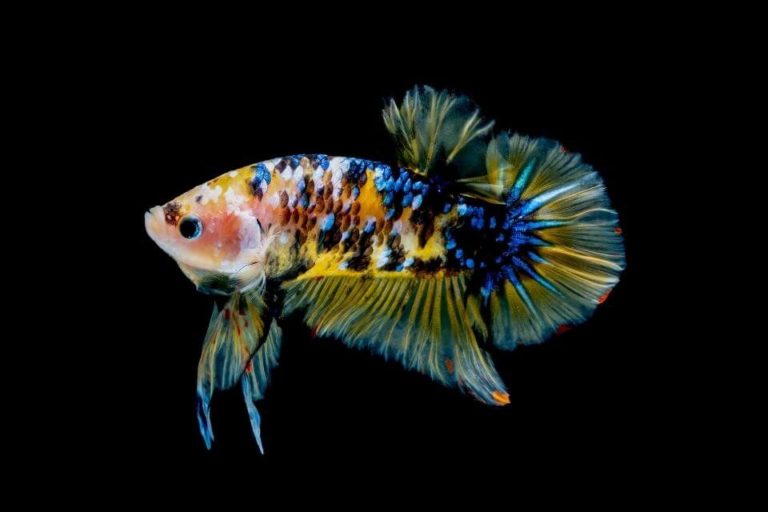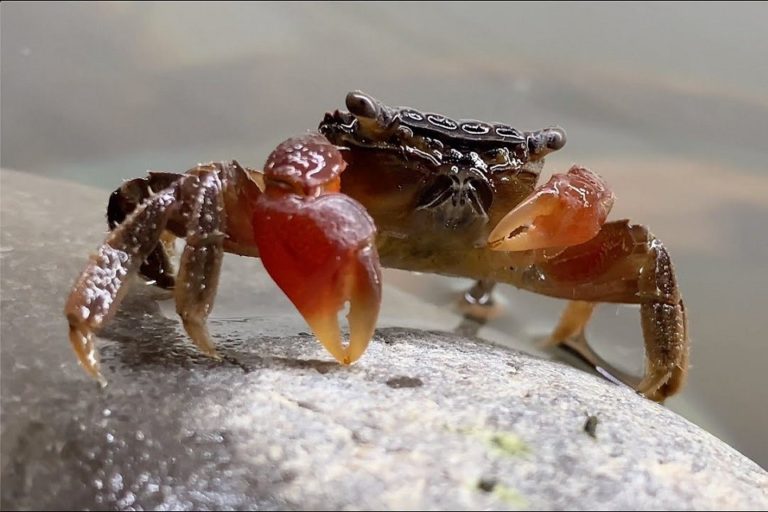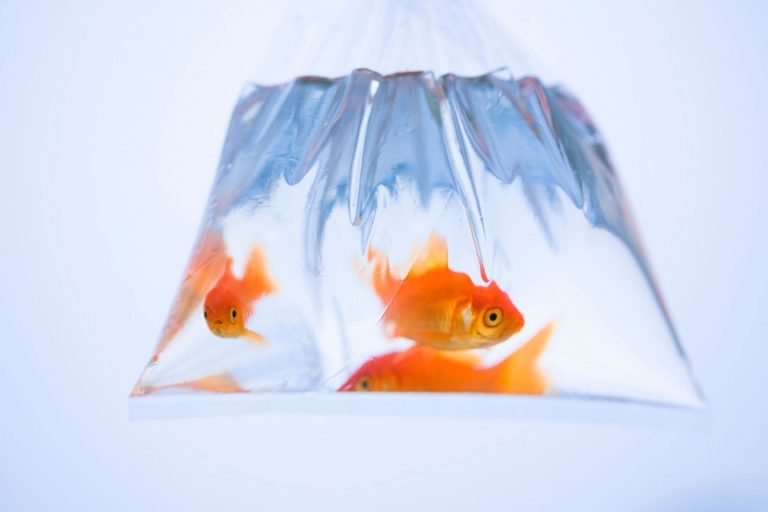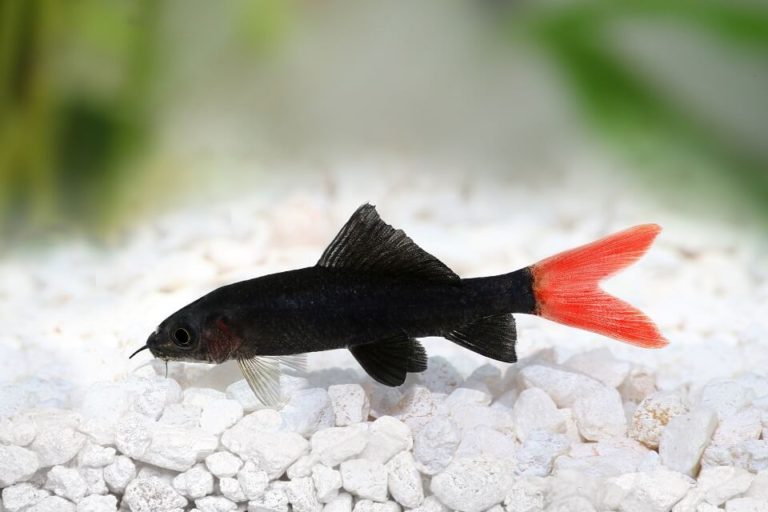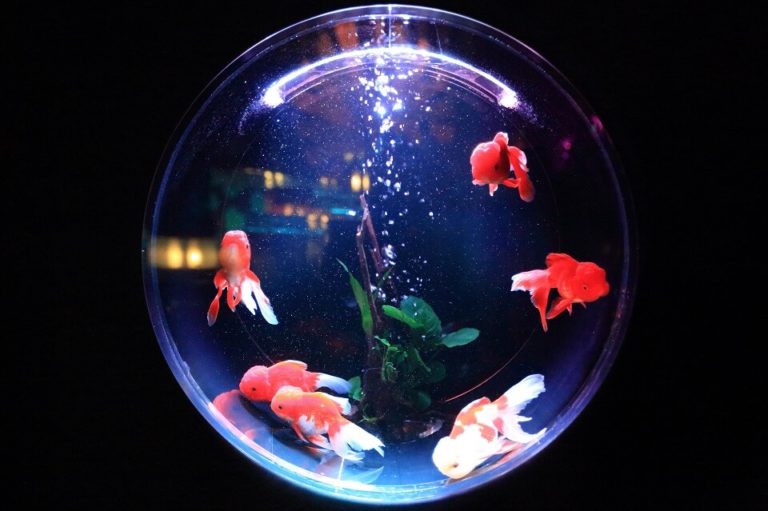Rainbow Shark Care Guide 101: Food, Tank Size, Tank Mates, Lifespan…
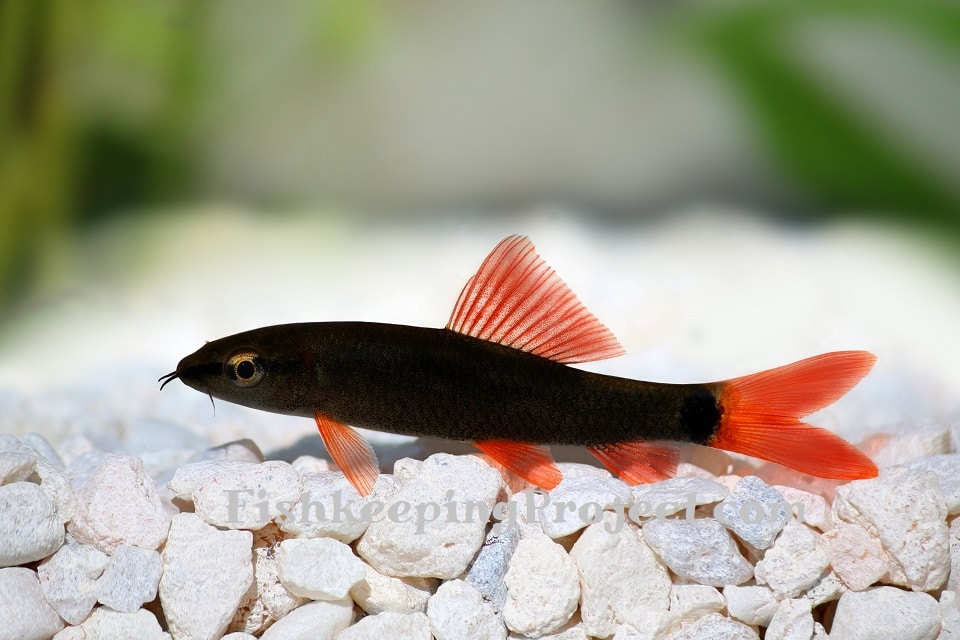
Rainbow Shark is a Southeast Asian freshwater fish that is known for its semi-aggressive personality and eye-catching appearance. It can be a great option if you want to add some activity and colors to your aquarium.
So, if you have some experience in fishkeeping and believe you are all set to add some more challenges to your aquarium world, then you should consider purchasing a Rainbow Shark.
This fish species is also a community-friendly fish that can go with most of the bottom dwell fish species. But first of all, we will discuss everything you need to know about Rainbow Shark care. Let’s have a look.
| Quick Facts: | |
|---|---|
| Common Names | : Rainbow Shark, Red Fin Shark, or Ruby Shark |
| Scientific Name | : Epalzeorhynchos Frenatum |
| Family | : Cyprinidae |
| Origin | : River basins of Southeast Asia |
| Care Level | : Easy to moderate |
| Lifespan | : 5 to 8 years |
| Size (average) | : Up to 6 in (15 cm) long |
| Diet | : Omnivore eater |
| Breeding | : Egglayer |
| Social | : Not a social fish |
| Temperament | : Semi-aggrasive |
| Minimum Tank Size | : 50 Gallons |
| Temperature | : 75°F – 81°F (24°C – 27°C) |
| Water Hardness | : 5 - 11 dGH |
| Water pH Level | : 6 - 8 |
Overview Of Rainbow Shark Species
Rainbow Shark is a small, tropical freshwater fish species that we can keep in your freshwater aquarium. This breed got this name not from its relation to the typical shark, but its shark-like appearance due to its upright dorsal fin.
These fish are known for their aggressive and territorial nature and vibrant red fins. You can expect this Rainbow Shark size to grow up to 6 inches in length and live as long as 5 to 8 years.
This breed is suitable for fish keepers with some years of experience and is looking to add some color and attitude to their aquarium.
Rainbow Shark Size
In adulthood, a full size Rainbow Shark can reach almost 6 inches. However, in captivity, Rainbow Shark size can be a bit smaller than wild ones.
These fish grow quite quickly and can reach nearly 1 to 1.5 inches in the initial weeks while growing to their full size in a few months. On some rare occasions, Rainbow Shark size can go up to 8 inches when receiving optimal care.
Rainbow Shark Lifespan
The average Rainbow Shark lifespan is about 4 to 6 years in a captivity environment. Even though many fishkeepers have reported 4 to 6 years, there are some occasions that Rainbow Shark lifespan is up to 8 years under high-quality care and a stressless environment.
Rainbow Shark Typical Behavior
These species are not the most aggressive fish in the underwater world, but they are not the most friendly and peaceful either. Though they might seem easily frightened when they are small, it is famous for becoming more aggressive and dominant as they mature.
As these fish tend to swim most of their time at the bottom of the tank, they are called aquarium cleaners because they eat everything, from the leftover fish food to algae growing off surfaces.
They are known for being peaceful when they are with their own kind. Also, these fish are territorial and are, therefore, likely to chase and attack bottom-dwellers if their space is threatened.
Such behavior can be reduced by making sure they are housed in a large aquarium. Also, ensure there are many hiding places for them, such as tunnels, caves, and other hollowed decorations.
A Rainbow shark fish is a nice choice over some other aggressive Red-tailed Black Sharks if considering temperament. However, it still does not count as an ideal community fish.
Appearance and Colors
As the name suggests, the Rainbow shark fish is one of the most visually pleasing creatures in the underwater world. This fish is categorized by its range of colors.
This fish is a dark gray fish with bright red/orange fins. Though their fins always maintain a red-orange color, the color of their body changes from gray or black to blueish.
According to some sources, the body color is somehow dependent on the health of the fish, with lighter color being an indication that it is sick.
It has an elongated body, smooth belly part, and sharp dorsal fin, which makes it slightly resemble real marine sharks. There are two eyes, one on each side of the head that usually appear to be hollowed.

Their dorsal fins may consist of nearly 11 branched rays, which gives them the appearance of a little arrow. The face of this fish is rather flat with a rounded snout in the front.
A common variation of these species is the Albino Rainbow Shark. This type maintains red-orange fins with a yellowish-white body. Albino Rainbow Shark grows to almost the same size as the typical Rainbow Shark.
Albino Rainbow Shark matches many of its characteristics, including being aggressive and territorial same as the common Rainbow Shark.
Another famous type is a genetically modified, fluorescent fish called GloFish.
Rainbow Shark Care
When you take care of any aquarium fish you must understand the needs of each fish species that you keep in your aquarium. The basic requirement that we discuss below is the key things you must focus on before you make a decision on choosing a fish to keep.
– Rainbow Shark Tank Size
When it comes to Rainbow Shark tank size, they are not among the biggest aquarium fish out there. But that does not mean they can be kept in small aquariums.
Since they are quite active and spend most of their day browsing around the aquarium for food, they require a huge horizontal space. Keeping their activity level in focus, it is advised to keep the Rainbow Shark tank size at least 50 gallons tank.
Any tank smaller than 50 gallons can make them more territorial and aggressive than its’ normal behavior. They need a lot of space to thrive and feel like they are in charge of their area of the tank.
And if you plan to house multiple Rainbow Sharks in a single tank, you should use at least 125 gallons tank. With larger space, you can add rocks, caves, dense vegetation, live plants, and other objects for the fish to explore and hide in.
– Rainbow Shark Tank Setup
When setting up a tank for your Rainbow Shark fish, the main thing is to focus on the tank substrate. For substrate, there should be sand as this is what is found in their native habitat.
You must keep the aquarium listed in dim settings to imitate their natural habitats. Adding tank decorations in their tank will be an optional thing.
But you need to set up the environment to feel the wild environment by adding some driftwood, aquarium rocks, and caves that will make some hiding places for them to relax.
Lastly, leave at least a few inches of space on top to let oxygen enter the tank. And ensure your aquarium lid is fitted well as Rainbow sharks are terrific jumpers.
– Suitable Plants
Though there are so many plants that work great in your Rainbow shark aquarium, you’ll still want to know what the best option would be. Some of the suitable plants have their tank as listed below.
- Java Fern
- Java Moss
- Hornwort
- Lemon Bacopa
- Amazon Sword
- Vallisneria
TIP: Using live plants in your aquarium is optional, and you can use artificial plastic plants. But unlike plastic plants, live plants maintain the water freshness by adding oxygen, utilizing nitrates, and removing carbon dioxide from the water. Hence the live aquarium plants are recommended.
– Water Conditions and Parameters
When keeping a Rainbow Shark, you should try to recreate the conditions of its natural habitat as best as possible. Like all other fish coming from clean water, this breed is also not very tolerant of poor water quality.
The tank should be completely cycled before any fish species get introduced. Go with regular maintenance, do weekly water changes, and test the water regularly.
As per your tank size, stocking levels, shark size, and filtration, you’ll possibly need to do 20% to 30% weekly water changes.
Avoid adding tap water directly into your fish aquarium. Rather, run that water through the usual Dechlorinator that effectively eliminates chlorine and chloramines present in tap water.
Temperature is another important thing that needs to be taken care of. Rainbow sharks are used to tropical waters and require warm temperatures. For this, you should invest in a top-quality aquarium heater that effectively maintains a suitable temperature.
Similar to the temperature, aim for a stable number within this range. Note that high pH levels force ammonia to stay in its unionized form, which can bring severe harm, and even death, to this breed.
Last but not least, Rainbow sharks are used to living in high-flow waters, similar to those of the Indochina river basins. To increase the water flow in your tank, place air stones or add a horizontal filtration system.
- Aquarium Water Template: 75°F – 81°F (24°C – 27°C)
- Water Acidity Levels: 6 – 8 pH
- Water Hardness: 5 – 11 dGH
Rainbow Shark Food and Feeding
In the wild, they are omnivorous and need a diverse variety of foods in order to remain healthy. Their diet in the natural environment includes a lot of algae, plants, insect larvae, leftover food, and similar food sources.
In the aquarium, they also eat algae that naturally occurs at the bottom of the tank. You can also feed algae to them in the form of flakes, wafers, or tablets.
Meat is particularly important when it comes to raising young Rainbow sharks. If they do not get adequate nutrition, their growth, as well as appearance, gets affected.
They will also eat some common vegetables, such as cucumbers, zucchini, boiled peas, spinach, lettuce, and green beans: all of these work great and provide a high-nutrient content.
Make sure you blanch the vegetables first and let them cool before adding them to your aquarium.
Your fish will also enjoy feeding on Repashy Soilent Green, Krill, Bloodworms, Brine shrimp, Mysis shrimp, and anything else that typically sinks to the bottom of the tank.
It is important to know that overfeeding your sharks can cause a serious problem. So, it is advised to feed your shark two to three times a day.
Keep a close eye on the food you provide and take it out if it is not eaten within a couple of minutes of feeding time. If your fish does not eat all food right away, try to feed it a half portion in the morning and the other half in the evening.
Common Diseases And Prevention
Rainbow sharks are a pretty resilient species of fish, and there are not so many diseases that are likely to occur repeatedly for them. However, like other fish, they can get affected by water diseases.
Some of the common diseases they get are listed below:
Bloat:
Bloating is a common health issue among Rainbow sharks, which is basically an accumulation of fluids, gas, or any unpassed food inside the fish. Symptoms may include fish appearing to be in discomfort, avoiding usual activities like swimming, not excreting, etc.
The possible causes of this illness are constipation, internal bacterial infection, or intestinal blockage.
Ich:
Also called White Spot Disease, Ich is a condition in which small white spots or pimples appear across the fish. It is caused by an Ichthyophthirius Multifillis (parasite) which attaches itself to the mouth, gills, fins, and body.
You can spot fish rubbing themselves against themselves since parasites cause itchiness before white spots even appear.
Swim Bladder Disease (SBD):
If you notice that your fish is swimming strangely or being unable to control the direction it is heading towards, it is possibly suffering from a swimbladder issue.
There are various reasons why fish develop this, of which some are cysts, bacterial infection, parasites, and fatty liver tissue. If your fish develop this condition, you may spot it floating or standing upside down, or sinking to the tank bottom.
Constipation:
Constipation normally clears up on its own, but one of its main causes is a lack of fiber. Some of the symptoms of constipation in fish include lethargy, bloating, and white, stringy feces.
One of the major causes of these illnesses among Rainbow Sharks is poor water quality. When it comes to their water quality, certain parameters must be met.
You can avoid these illnesses with regular maintenance. Even if they are bottom dwellers, they still need pure, fresh water for healthy living. Don’t overfeed your fish and only use top-quality food with a strong emphasis on protein and veggies.
Gender Differences of Rainbow Sharks
There are some physical and visual variations between male and female fish. For instance, male fish are thinner and brighter in color and can be easily identified through thin gray/black lines on their tail fin.
These lines usually appear as the fish reaches maturity, making it visually impossible to determine the gender of juveniles. On the other hand, females have less-bright red or orange fins than male sharks. Also, female sharks have no lines on their tail fins.
Female boasts thicker bodies and more curved bellies. These changes only become apparent when the fish matures. It is difficult to distinguish a Rainbow Shark male or female when they are small.
Breeding The Rainbow Sharks
When it comes to breeding, nearly no cases of aquarium-based breeding have been reported up to now. These fish are nearly impossible to breed in an aquarium setting due to their aggressive and territorial nature.
According to most expert aquarists, it happens due to their intolerance of each other in the tank. Mainly, Rainbow sharks are bred in commercial farms in Southeast Asia. They are known to be egg-layers.
They tend to mate from October to November, which is when their sexual maturity reaches its highest level. However, the months can get impacted by seasonal changes.
When mating happens among them, the female lays her eggs and lets her selected male to fertilize them with his milt spray. From here, the eggs will hatch within one week.
However, if you are willing to take the challenge, you need to have a bigger tank space (at least 75 gallons) for the plants, other aquarium decorations, a heater, and a high-efficiency filter.
Rainbow Shark Tank Mates
Since they are quite aggressive and like to maintain their own territory, it is advised to carry out a little research to find out which breeds they are compatible with. They tend to dwell near the bottom of the water tanks.
That being the case, you should avoid putting Rainbow Sharks with tank makes that are bottom-dwelling also. This is because they will consider other fish dangerous and attack them. Some of the other bottom-dwelling fish are cichlids and catfish.
Instead, you can house your Rainbow shark with species that dwell near the top or middle of the aquarium and are capable of defending themselves if required.
Some of the good Rainbow Shark tank mates are:
- Zebra Loaches
- Danios
- Boesemani Rainbowfish
- Madagascar Rainbowfish
- Tiger Barbs
- Honey Gourami
- Pearl Gourami
- Chili Rasboras
Other than that, it is better to stick with schooling fish that inhabit the upper and central water layers.
Another important thing to consider while selecting Rainbow Shark tank mates you shouldn’t house any fish resembling them like Bala sharks and Red Tail Sharks.
This fish species likes to maintain its own territory, which it will strongly guard against any fish resembling it. However, if you want to house your Rainbow shark fish with some other shark species, you should keep a huge tank (nearly 150 gallons tank).
Also, avoid housing your Rainbow Shark fish with long-finned fish. If you do so, your fish will bite the fins of others. You should also not house your Rainbow Shark fish with fin nippers since Sharks boast relatively long fins, so, they’ll get attacked by the fin nippers.

Origin And Distribution Of Rainbow Shark
A Rainbow shark, or the Epalzeorhynchos Frenatum, is a part of the Cyprinidae family. This family also includes the Common Carp, the Common Loach, and Goldfish.
Rainbow Sharks are native to freshwater river basins in Myanmar, Thailand, Laos, and Malaysia. These fish was once plentiful in Southeast Asian waters, but have reduced in number in the past few years.
According to some scientists, the damming of some rivers like the lower Xe Bang Fai has impacted the population of Rainbow Sharks lately.
Are Rainbow Sharks Fin Nippers?
The long-finned fish must not be housed with Rainbow sharks, like freshwater Angelfish, as the sharks may nip at long-finned fish.
How Many Rainbow Sharks Should Be Kept Together?
Ideally, you should keep only one fish of these species in an aquarium at any time. Like some other species, this breed cannot tolerate living with its own kind of fish.
Due to their aggressive nature, the larger Rainbow sharks keep on chasing the smaller ones relentlessly until they are killed. But if you insist on keeping more than a single of this kind, you need to follow these rules:
-
-
- Never keep only two Rainbow sharks.
- Keep a group of four or more fish of this kind in a tank.
- Ensure all Rainbow sharks have at least a meter of separated territory.
-
Final Thoughts
Keeping everything into consideration, Rainbow sharks can be an amazing addition to your aquarium. They are more friendly and more peaceful than many common sharks, making them a better choice for communities.
Having said that, these fish demands extra care and attention and requires a large, clean space in order to thrive. If you provide everything it needs, it will certainly be a terrific addition to your aquarium in the future.
We believe this care guide helped you to get a good idea about Rainbow Shaks. If you believe this article is useful and you have learned about Rainbow sharks, please free to put your comment below.


